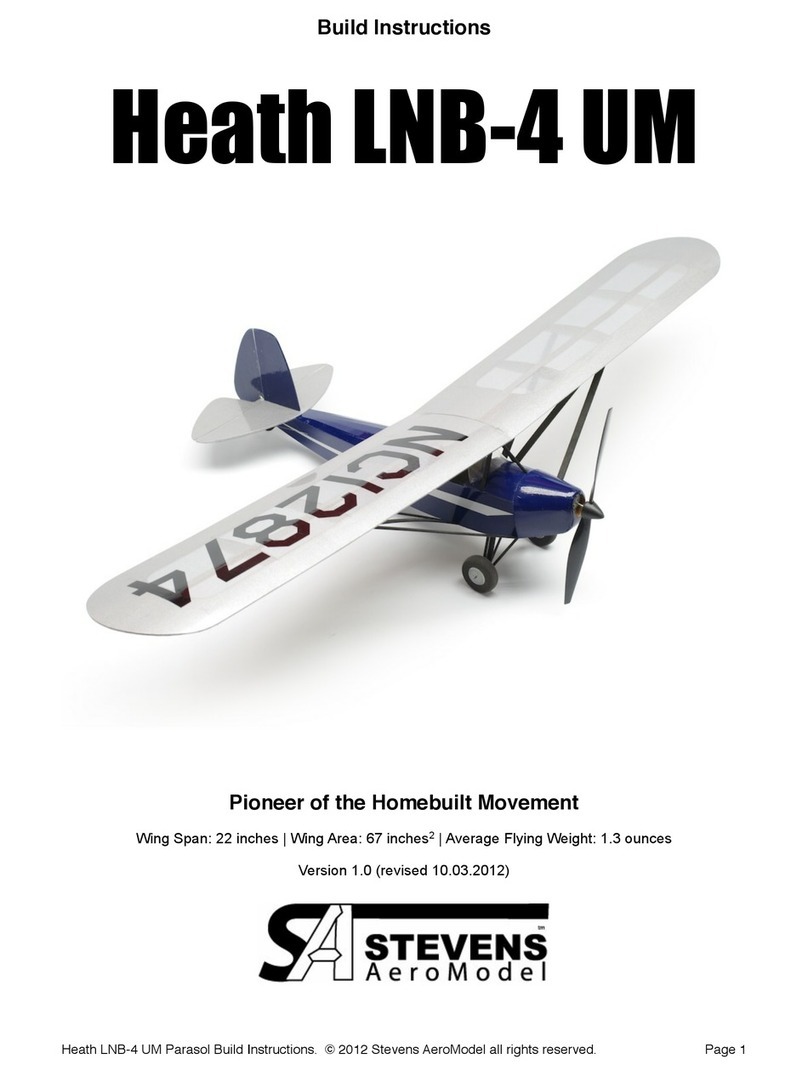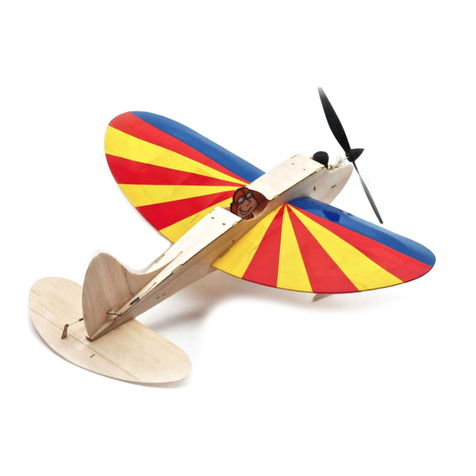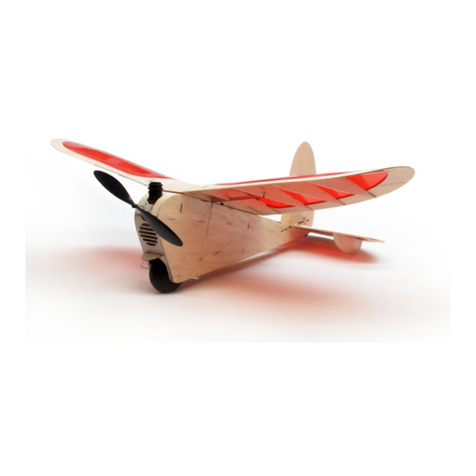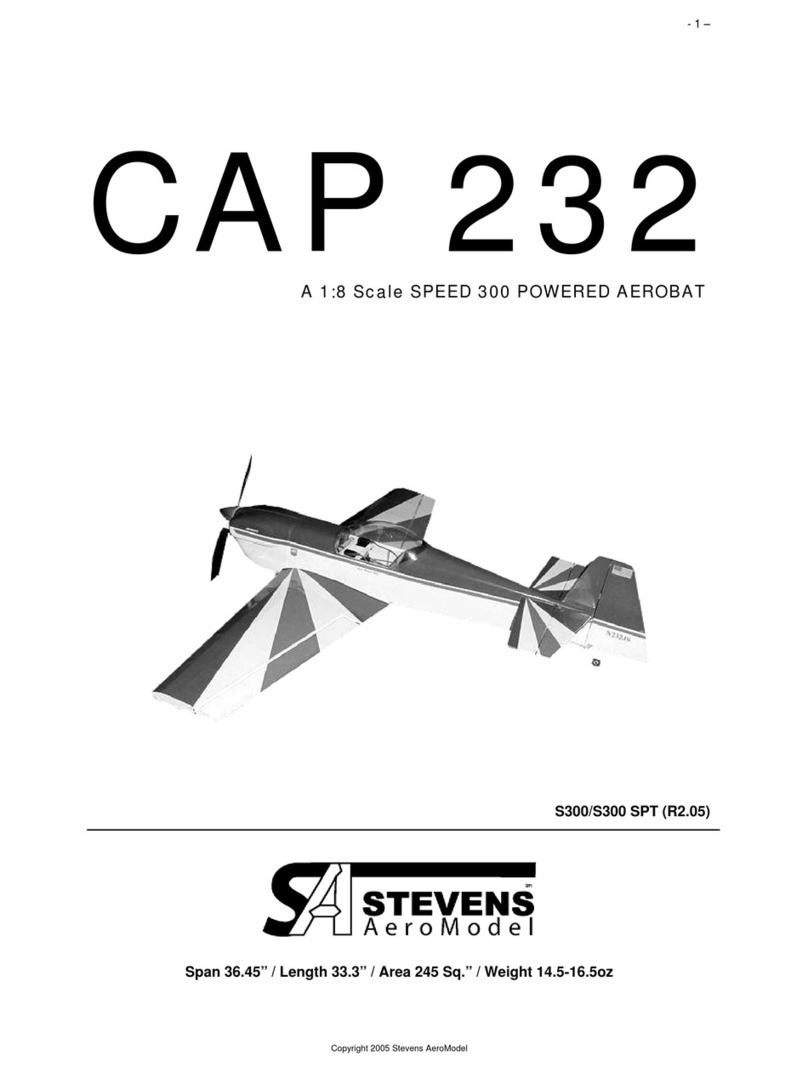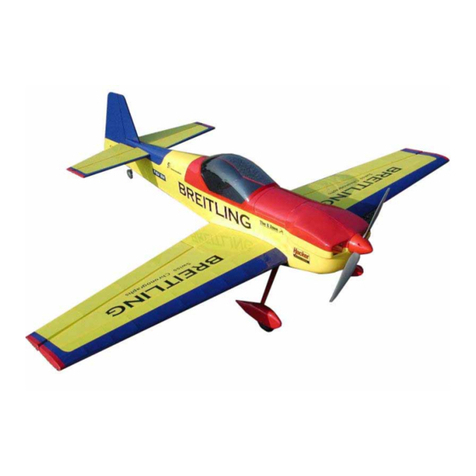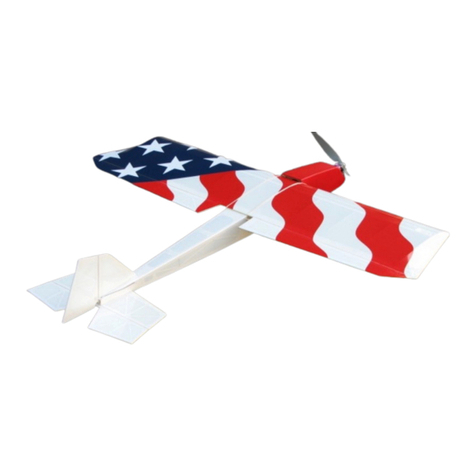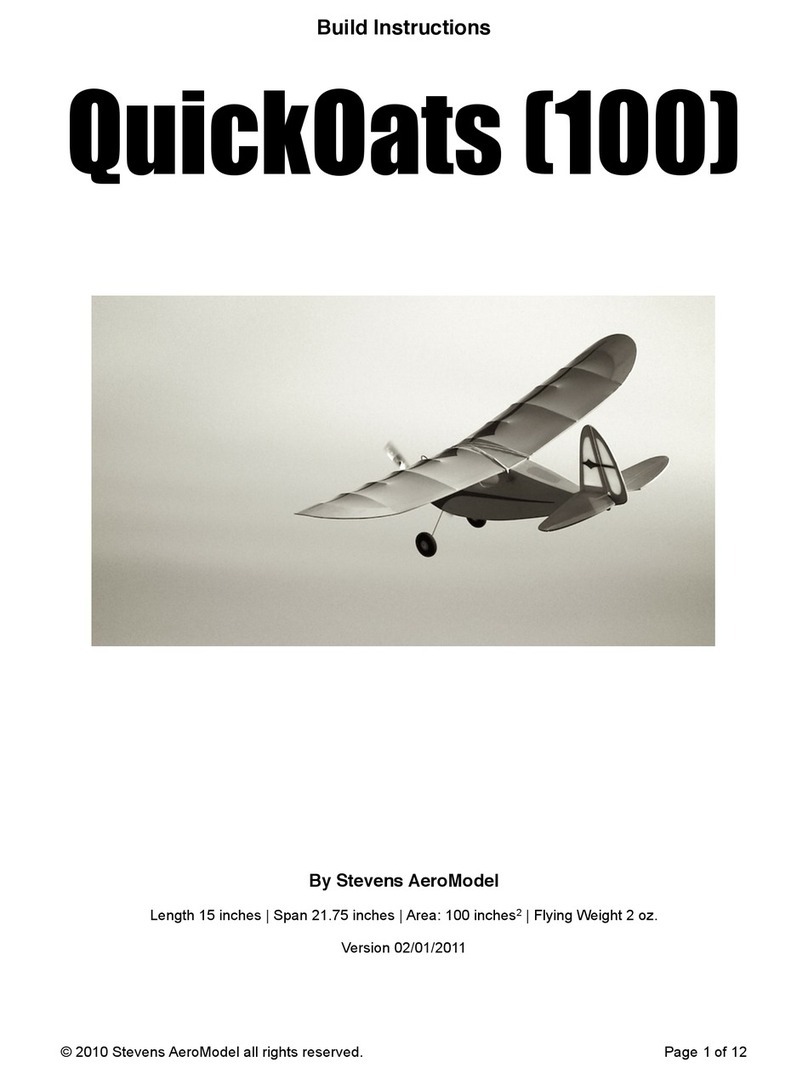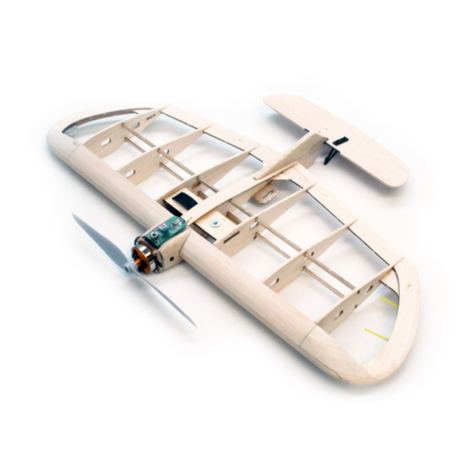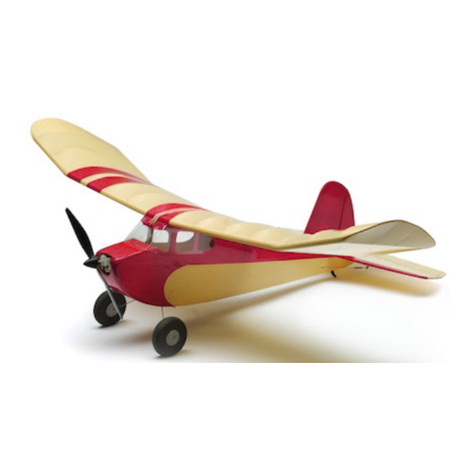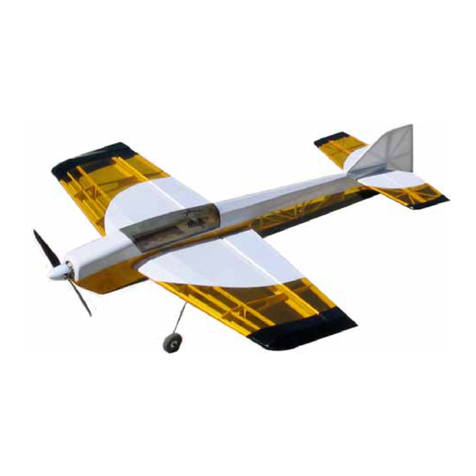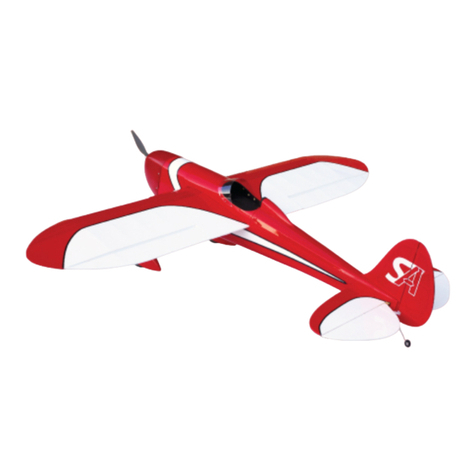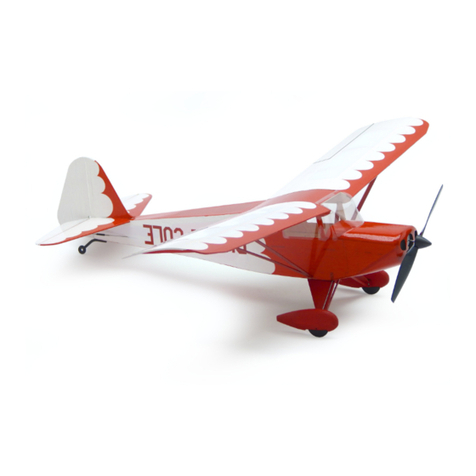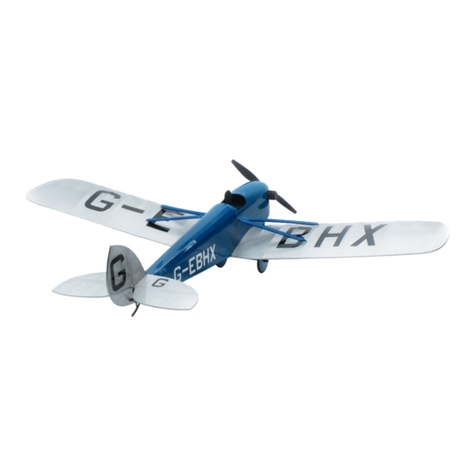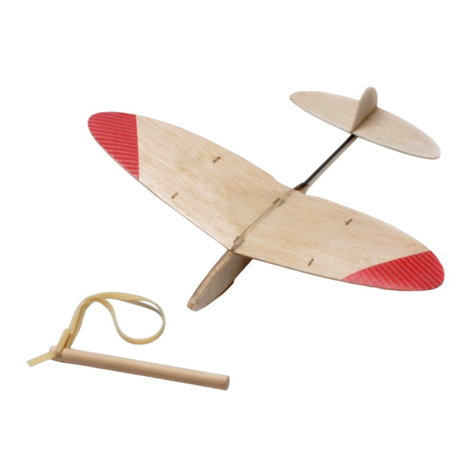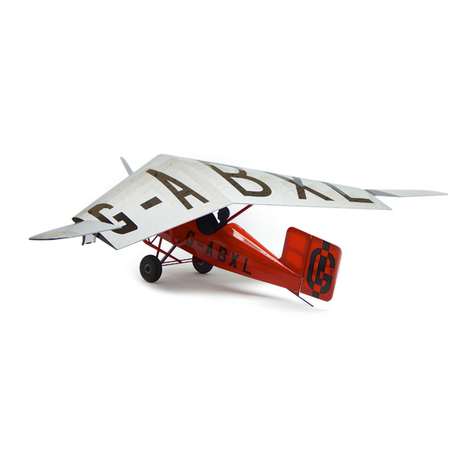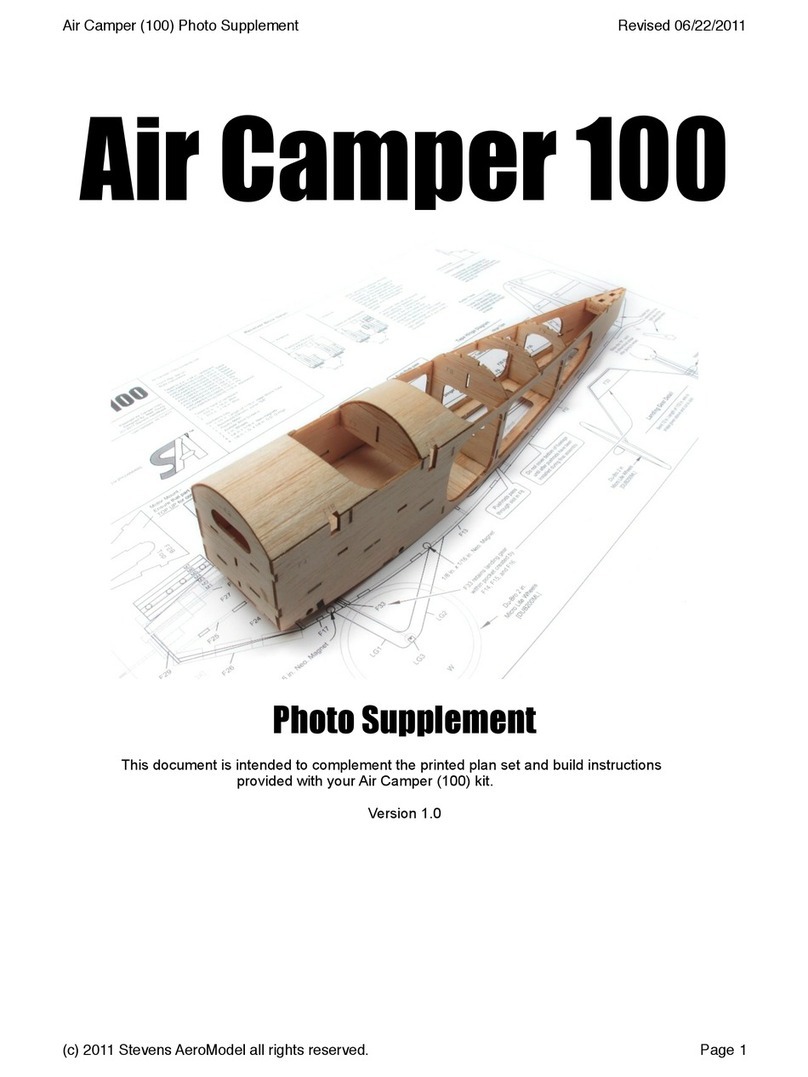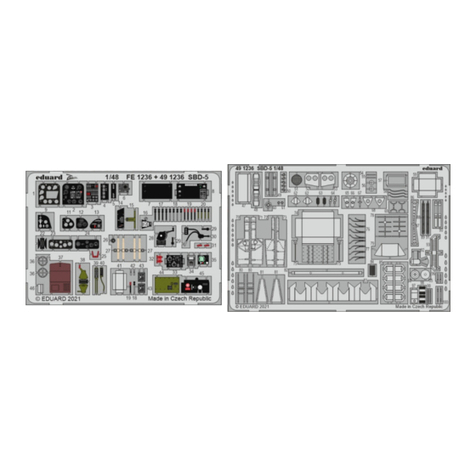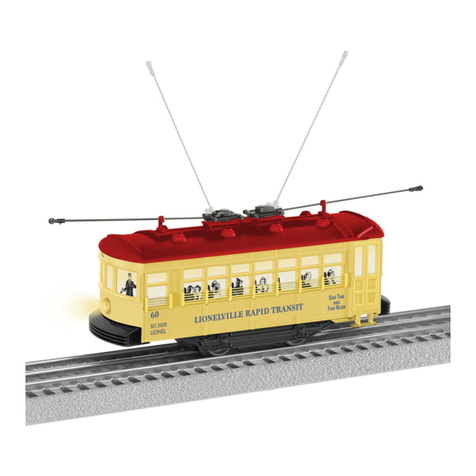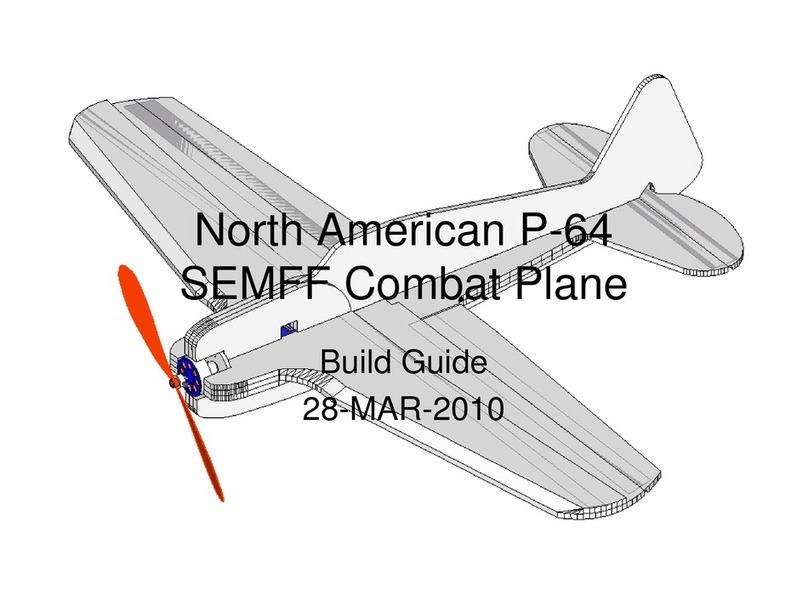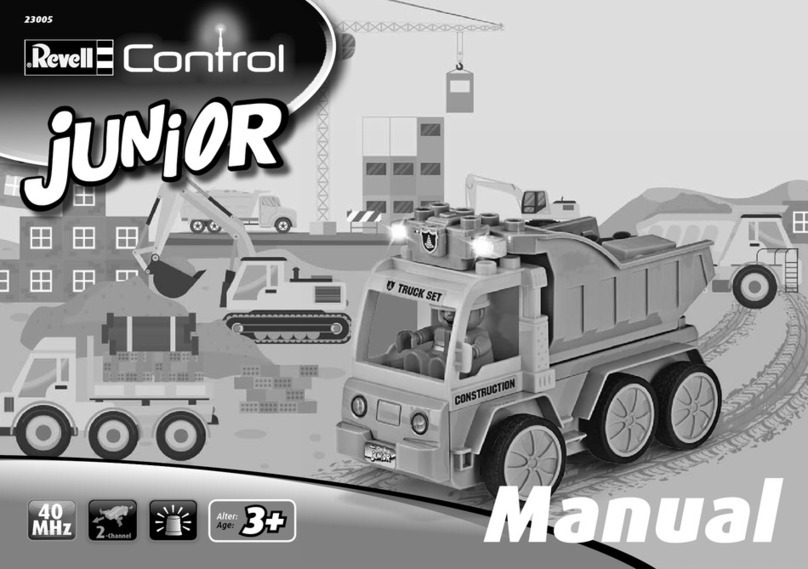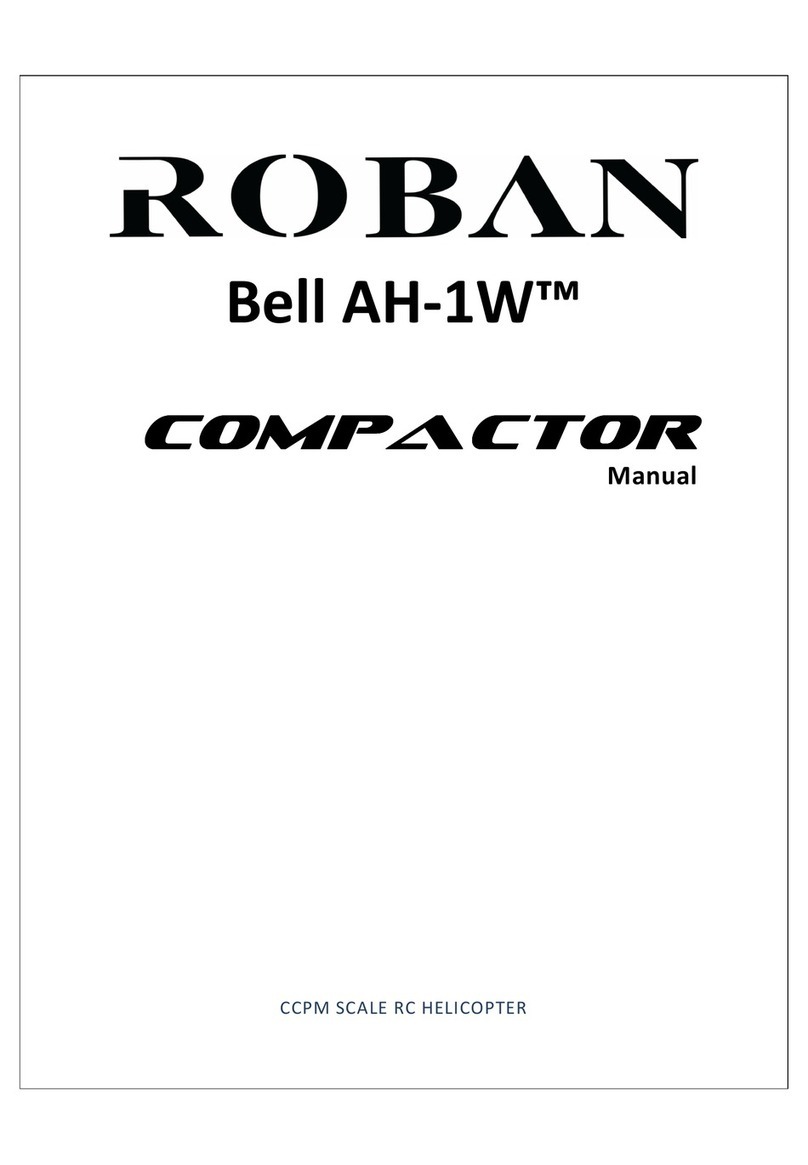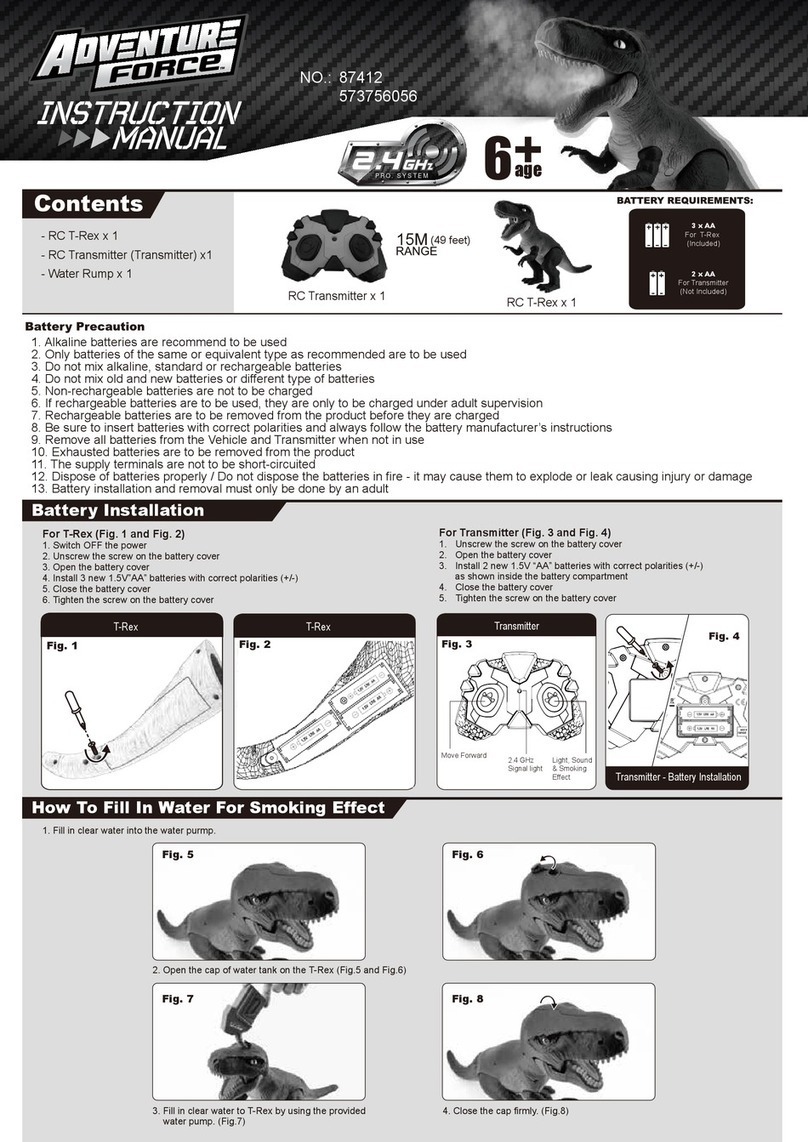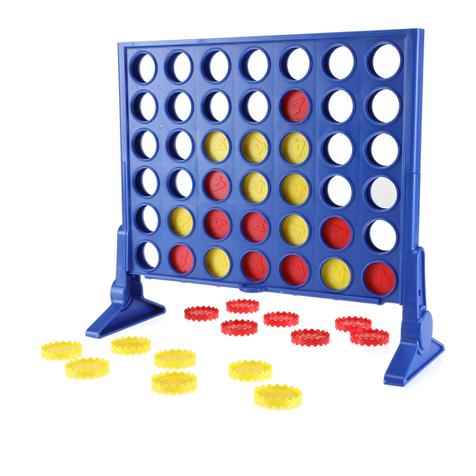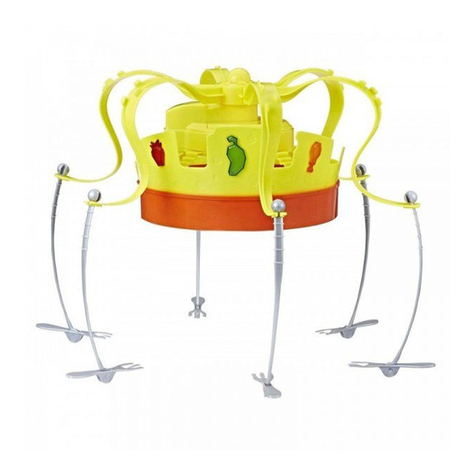
19
© 2005 Stevens AeroModel all rights reserved.
Aerodynamics of Turning Flight
It’s just a turn, right? I mean, add a little rudder or aileron and away she
goes, right? Well, sort of. While it is true that most models will turn with
only a touch of aileron/rudder, there are techniques that allow a smooth
transition into and out of bank angles and ensure that the model is
coordinated in roll and yaw during the turn. In fact, during a constant
altitude, constant speed turn, all of the controls are used (including the
throttle).
So what exactly is a coordinated turn? A coordinated turn is one that
maintains a constant rate of turn with zero sideslip. In other words, the tail
follows the nose. It is not uncommon for pilots to slip through an entire
turn. Slipping through a turn causes a large increase in the drag during the
turn. In many ways it can be compared to a car skidding around a turn. In
fact, we use similar terminology to describe uncoordinated turns with
aircraft that is used to describe a poorly cornering car. When the nose is
tracking behind the actual rate of turn, it is called slipping. Conversely,
when the nose is tracking ahead of the rate of turn of the aircraft, it is
called skidding.
It is not only uncomfortable for the occupants (not a particularly large
concern in our models) but is also just sloppy flying.
Note** The term “coordinated turn” is one that describes a turn made by
an aileron equipped model. If you fly a Rudder/Elevator/Throttle (R/E/T)
equipped model, the built in dihedral of the wings handles the coordinating
of the turn for you, but this is still good reading as you will be flying an
aileron model before long**
Note** I know many relatively experienced pilots that have never used
these techniques for turning flight, and their models fly fine. It is true that
some aileron models do not exhibit adverse yaw during turning flight (and
as such do not require rudder coordination). I do find, however, that the
vast majority of aileron trainers require rudder inputs for coordinated flight.
That said, your model will turn with just aileron inputs, it just may not
be perfectly coordinated. In time, I hope that you will integrate this skill into
your flying**
Our goal is to make a constant altitude, constant speed, and constant rate
turn. This will require the use of all four controls. To initiate the turn, add a
small amount of aileron to establish a roll rate towards the intended bank
angle. Most planes, as a result of adverse yaw from the ailerons, will yaw
slightly in the opposite direction of the roll. To keep the turn coordinated in
yaw, add a small amount of pro turn rudder (left aileron/left rudder). This
will cause the nose to fall in line with the turn radius rather than fall to the
outside of the turn (slipping).
As for the other flight controls involved with turning, they are the elevator
and the throttle. The elevator will be used to raise the nose slightly during
the turn to maintain altitude. Why is this necessary? During a turn we use
a portion of the lift created by the wings to change the flight vector of the
aircraft (changing heading) through a bank angle. With a decreased
amount of lift being used to maintain altitude, it is necessary to increase
the lift of the wing to avoid descending. The only way to do this at a
constant speed is to increase the angle of attack of the wing. We do this
through an up elevator input. Keep in mind that this elevator input only
lasts as long as the turn and will cause a balloon in altitude if you don't
take it out as you roll out of the turn.
The last control is the throttle. In a turn, we use the throttle to maintain a
constant airspeed. As mentioned above, total airframe drag is increased
during a level turn. You may need to add a touch of throttle to overcome
the additional drag during the turn.
Who ever thought a simple turn could be so complicated? Fortunately
after a little practice, you'll find yourself making the necessary adjustments
without thinking about it




















